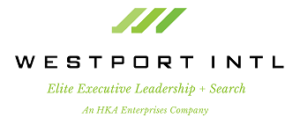2014 Human Resources Practice Area
Human Resources has been a focus practice area since the inception of our company. While we are not a one dimensional pure HR search firm, we have expertise in finding HR senior leader talent in many industries, across the U.S., and for all size organizations. We have the experience and expertise to identify true HR business partners for your critical positions.
Searches for Human Resources talent continues to top our list as one of our most active practice areas. There is a marked increase in the number and the caliber of talent and organizational development roles inside the organizations we support. We have seen a shift in which many organizations are now combining organizational development, talent management, learning and talent acquisition. The need for leaders with broader overall talent management skills is on the rise.
We have also seen an increase in organizations reaching out to us to help them build, improve or supplement their internal talent acquisition functions. As more organizations recognize the criticality of a strong acquisition function (as part of an overall talent management strategy) , it has become clear that hiring contract recruiters off the street is not going to achieve the ROI and performance needed.
As a result, we have taken our PinPoint Talent Services assessment tool and recruiter development program to our clients. We have assisted our clients with upgrading their internal talent acquisition team performance and also with supplementing their recruiting needs with short and long term recruiting arrangements. As an example, we are pleased to announce that we have added an additional team member to our project team supporting a large aerospace client with their recruiting activities in Europe.
2014 has been another strong year in finding great HR talent including the following key placements:
- Vice President of Human Resources and several Human Resources Director positions for a $16B premiere diversified industrial corporation
- Multiple Director of Human Resources positions for a $8B automotive supplier
- Director of Human Resources for a leader in the aerospace supplier market
- Division Human Resources Manager for a $14B diversified industrial corporation
- Senior Organizational Development Manager for a global consumer products leader
- Labor Manager for a market leader in products and systems for electrical installations
We are also currently conducting searches for the following:
- Vice President of Human Resources for a $1B medical technologies business unit of a global diversified industrial corporation
- Director of Global Learning and Development for a $2B global supplier to the aerospace and energy management markets
- Compensation Manager for a market leading specialty chemical manufacturer
- Union Management Relations Representative for a leading engine manufacturer
- Various plant HR Manager roles for the automotive supply and electrical installation markets
Our clients are demanding more of their Human Resources leaders. They want HR leaders who speak the language of business first and functional expertise second. They want demonstrated capability and success in leading large scale change, expertise in talent management, culture change, managing global workforces, strategic thinking, market space understanding and a healthy dose of understanding business financials and metrics thrown in as well.
At Westport Intl, we understand the ever-changing talent needs of the world today and commit to finding the very best the market has to offer. Find out more.



